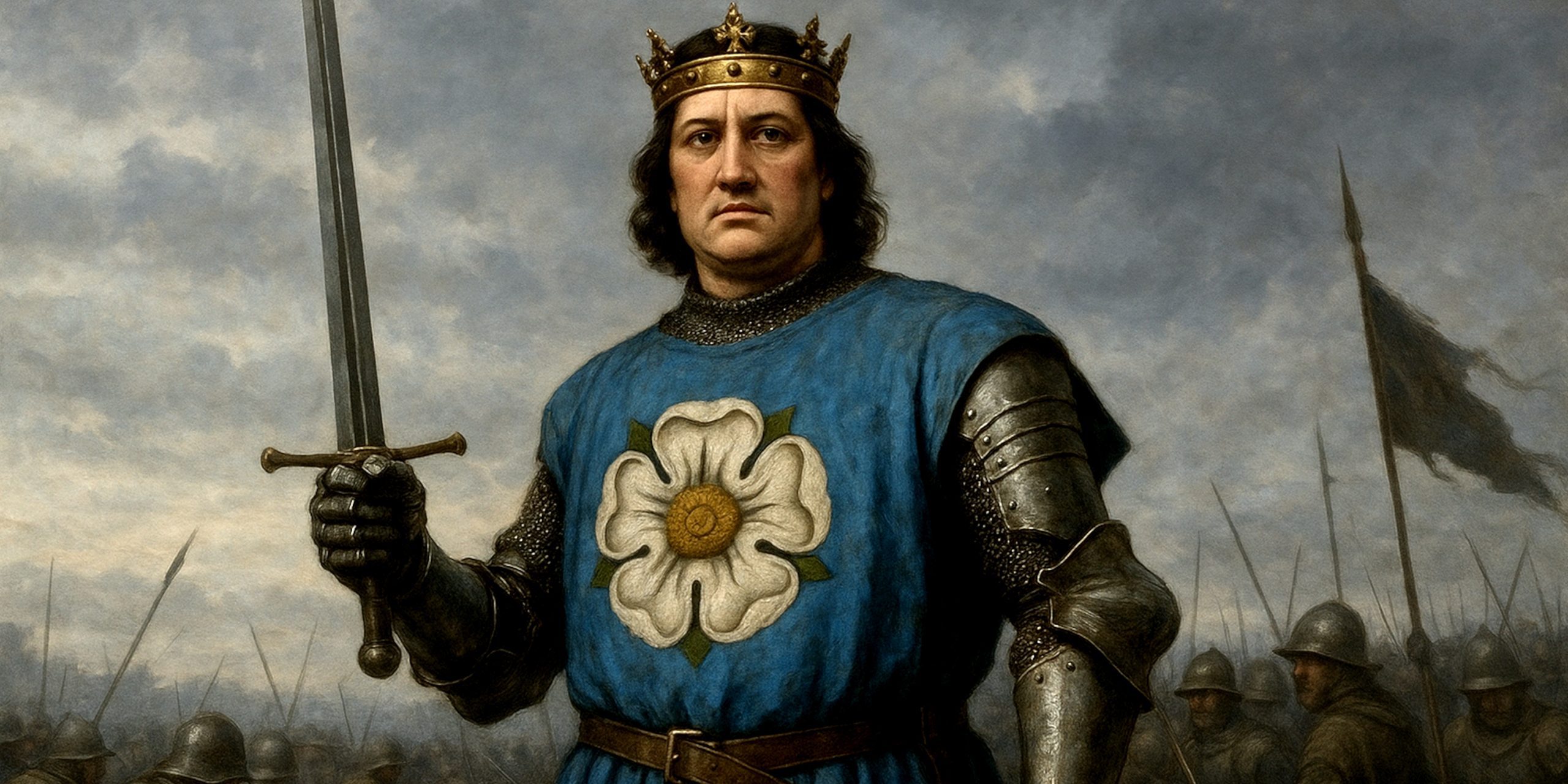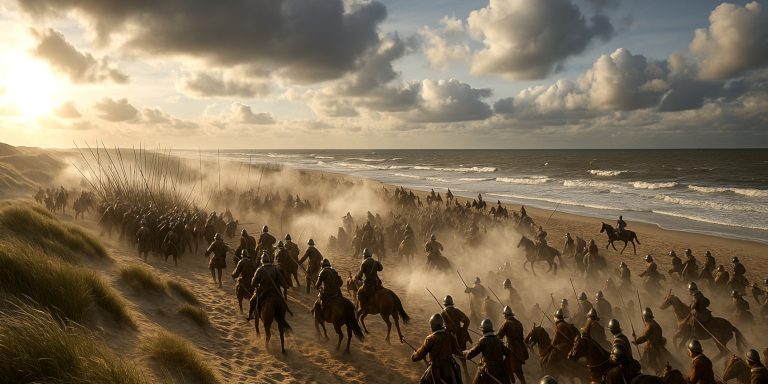
Edward IV was one of the most charismatic and militarily capable monarchs of late medieval England. A leading figure during the Wars of the Roses, his reign was marked by brutal power struggles, battlefield triumphs, and a delicate balance between nobility and monarchy. He was the first Yorkist king to secure the English throne for a meaningful duration, laying the groundwork for short-lived Yorkist stability.
Arms and Armour
As a monarch who fought in multiple campaigns, Edward IV had access to the finest military equipment of his time. Though no surviving suit can be definitively attributed to him, records and contemporary illustrations suggest he wore late 15th-century plate armour of the English Gothic style.
- Helmet: Likely used a close helm or sallet with a bevor for neck protection.
- Body Armour: A full harness of plate, with breastplate and backplate, often fluted and sometimes etched with symbols of the House of York.
- Weapons: Edward probably wielded a longsword in battle, the standard knightly weapon of the era. He may also have carried a rondel dagger and used a pollaxe in dismounted combat.
- Livery: His personal badge was the white rose of York, often displayed with the sun in splendour, referencing the parhelion seen before the Battle of Mortimer’s Cross.
Illustrations from his reign and household accounts show an interest in continental arms manufacture, particularly Milanese and Burgundian designs. These would have influenced the tailoring and decoration of his armour.
Battles and Military Genius
Edward IV was a physically imposing warrior-king, noted for his height (well over 6 feet) and strength. His battlefield instincts and leadership played a decisive role in establishing and reclaiming his rule.
Notable Battles:
| Battle | Year | Outcome | Opponent |
|---|---|---|---|
| Mortimer’s Cross | 1461 | Victory | Lancastrians |
| Towton | 1461 | Decisive Victory | Lancastrians |
| Edgecote Moor | 1469 | Defeat | Rebel Yorkists |
| Barnet | 1471 | Victory | Earl of Warwick (formerly his ally) |
| Tewkesbury | 1471 | Decisive Victory | Lancastrians |
At Towton, Edward commanded one of the bloodiest battles on English soil, demonstrating tactical awareness under severe winter conditions. At Barnet, his surprise assault through fog disoriented Warwick’s forces, while at Tewkesbury, his disciplined ranks overwhelmed the Lancastrian heir’s army. These were not mere victories. They were defining blows to the opposition, removing rivals and securing Edward’s throne.
He understood not just field tactics but also the logistics of mustering, provisioning, and disbanding armies without turning them into marauding bands, a problem that plagued less competent commanders.
Where to See Artefacts from His Reign
Though no confirmed personal arms or garments of Edward IV survive, several important objects linked to his court and era can be seen in museums and collections across England:
- St George’s Chapel, Windsor Castle: Edward is buried here. The tomb itself was looted during the Civil War, but fragments of the original effigy remain. The location is also a Yorkist architectural legacy.
- The British Museum: Holds coins minted during Edward’s reign, including gold angels and groats, which reflect his efforts to stabilise currency and strengthen royal imagery.
- The Royal Armouries, Leeds: Features late 15th-century English plate armour and weapons typical of Edward’s army. Though not directly tied to the king, they offer a visual context for his martial life.
- National Portrait Gallery, London: Early posthumous portraits of Edward IV provide insights into his royal presentation and propaganda.
Latest Archaeology
Recent archaeological interest in the Wars of the Roses has shed light on the landscape and violence of Edward’s battles:
- Towton Battlefield: Continued excavations and osteoarchaeological analysis of mass graves reveal the scale of the fighting and types of wounds inflicted. Many remains show trauma consistent with heavy polearms and sword strikes, likely encountered in close combat typical of Edward’s engagements.
- Tewkesbury Battlefield: Ground surveys and archival work have clarified the Lancastrian retreat paths and confirmed long-held theories about the ambush in the ‘Bloody Meadow’ by Edward’s forces.
- Middleham Castle (a Yorkist stronghold): Conservation work and digital reconstructions offer a deeper understanding of the administrative and military base from which Edward operated in his youth and early campaigns.
No direct burial finds or relics of Edward himself have emerged, but his reign remains visible in the material culture and landscape of England, especially in sites tied to Yorkist dominance.
Edward IV combined military ability with a calculated charm that helped him regain and hold power in a turbulent period. He was ruthless when needed but also pragmatic, knowing when to pardon and when to destroy. His reign brought temporary calm after decades of civil strife, though it also set the stage for future dynastic collapse. His legacy is one of blood, strategy, and a vision of kingship shaped on the battlefield as much as the throne.
Watch the documentary:



